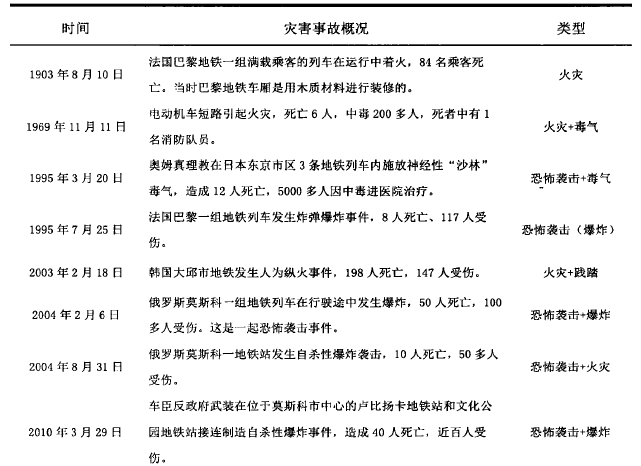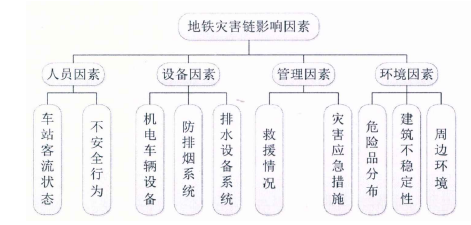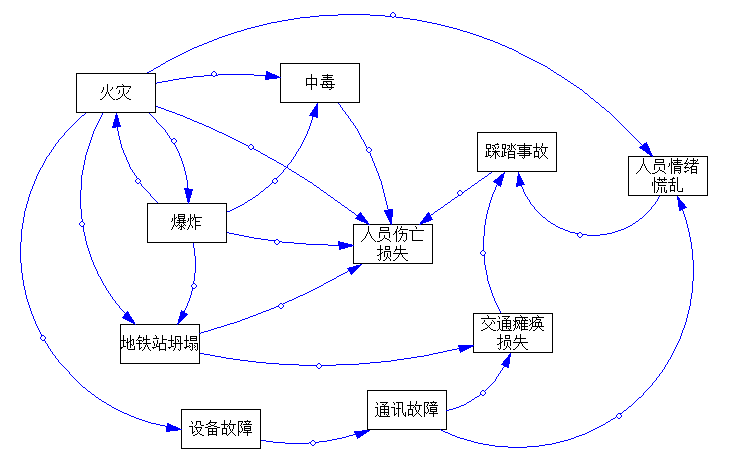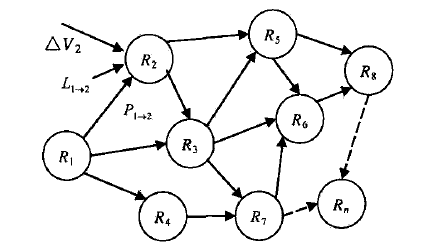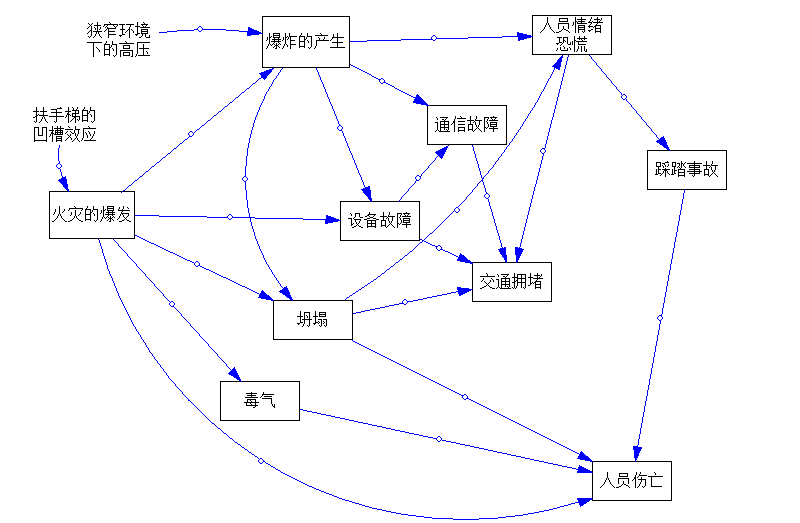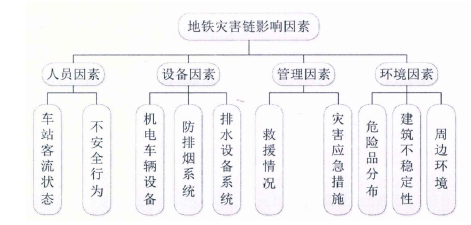基于灾害链的地铁系统火灾风险评估及其工程应用毕业论文
2020-04-15 21:48:09
摘 要
随着经济的发展,城市中的轨道交通建设的规模越来越大。地铁项目作为城市中轨道交通的重要组成部分发展非常迅速,另一方面地铁因为其深处地下、封闭等特殊的环境,其发生灾害的严重性也非常的高。
当灾害发生火灾的时候,地铁因为其独特封闭的环境,通常都会引发次生与衍生灾害,使得整个灾害的发展呈现出一种链式的结构。而数据表明,地铁火灾发生的次数在地铁灾害中占绝大多数,并且造成的的人身伤害与经济损失更大,因此,对地铁进行风险研究具有重要的意义。而本文就地铁这一特殊对象,引入灾害链的相关理论,对地铁系统的关于灾害链的风险评估进行研究。
首先通过了解灾害链相关概念及地铁内部结构与运营的特点,通过提出地铁内火灾产生灾害链的可能性,接着运用链式风险评价的知识去对其进行风险评价与分析,建立风险评估模型。最后使用贝叶斯公式与复杂网络的知识去进行评价分析。最后通过经典案例分析,用系统动力学软件vensim软件绘制灾害链图,用前文得出的算法模型进行计算。并对得到的结果进行分析,并站在管理者的角度提出决策建议。
关键词: 地铁;灾害链;风险评价;复杂网络;贝叶斯公式
Abstract
With the development of the economy, the scale of urban rail transit construction is growing. The subway is the main form of urban rail transit. On the other hand, because of its special environment such as underground and closed, the subway has a very high severity of disasters.
When a disaster occurs, the subway usually causes secondary and derivative disasters because of its unique and closed environment, which makes the development of the entire disaster show a chain structure. The data shows that the number of subway fires occurs in the majority of subway disasters, and the personal injury and economic losses are greater. Therefore, it is of great significance to conduct risk research on the subway disaster chain. In this paper, the special object of the subway, the theory of disaster chain and system dynamics is introduced, and the disaster risk assessment of the subway system is studied.
Firstly, by understanding the related concepts of the disaster chain and the characteristics of the internal structure and operation of the subway, the risk of generating a disaster chain in the subway is proposed, and then the risk assessment and analysis of the chain risk assessment is used to establish a risk assessment model. Finally, Bayesian formula and knowledge of complex networks are used for evaluation analysis. Finally, it is applied to the risk assessment of the subway, and the value of the risk assessment results of each node on the subway is obtained. The risk management of the subway fire provides a reliable theoretical basis.
Key Words:Rail;Hazard chain;Risk assessment;complex networks;Bayesian formula
目 录
摘要…………………………………………………………………………………I
ABSTRACT………………………………………………………………………II
第一章 前言 1
1.1 地铁灾害链研究背景及意义 1
1.2 灾害链与灾害链应用的国内外研究现状 1
1.3课题思路与研究方法 2
第二章 地铁火灾灾害链 2
2.1灾害链的形成机理 7
2.2地铁火灾灾害链 8
2.2.1 地铁运行灾害学分析 8
2.2.2地铁事故特征 8
2.2.3地铁灾害链的影响因素分析 9
2.2.4地铁火灾灾害链的形成 11
第三章 灾害链的风险评价理论 13
3.1风险评价 13
3.2链式风险评价理论 13
3.3灾害链风险的度量模式 16
3.3.1灾害链的网状结构特征 16
3.3.2灾害风险的度量模式 16
3.3.3节点灾害损失的等级划分 18
3.3.4连接边的概率分析 18
第四章 典型灾害链事件分析 20
4.1 背景事件介绍 20
4.2 事件灾害链分析 20
4.3 地铁火灾灾害链分析评价 21
4.4 地铁火灾灾害链的结果分析与控制决策 22
第五章 结 语 23
参考文献 24
前 言
- 地铁灾害链研究背景及意义
二十世纪以来城市化进程加快,城市规模不断扩大,伴随着的是城市轨道交通建设的大规模开展以及客流量的逐年增长。而近年来,随着经济发展,产业转型,安全、环境等上层建筑的建设也在开展。人们对于城市生活要求的也在不断提高,这使得城市管理者对于车站的运营、服务尤其是关于安全的水平的重视程度也在不断提高。
然而城市轨道交通系统的建设给现代人们带来了巨大便利的同时,也有着急待解决的安全问题。城市地铁系统,由于其环境相对封闭、客流聚集程度高、疏散通道有限等特点的特点,使得其一旦发生灾害,特别是火灾,火灾产生的浓烟在有限的环境里扩散迅速,使得人员的疏散和救援的难度很大,而封闭的环境形成的“多米诺效应”,使得地铁站内某一灾害的发生往往极易传播,而灾害以链式反应进行演变,进而导致事件进一步恶化,最终形成“灾害链”,造成巨大的生命财产损失。
以上是毕业论文大纲或资料介绍,该课题完整毕业论文、开题报告、任务书、程序设计、图纸设计等资料请添加微信获取,微信号:bysjorg。
相关图片展示:
